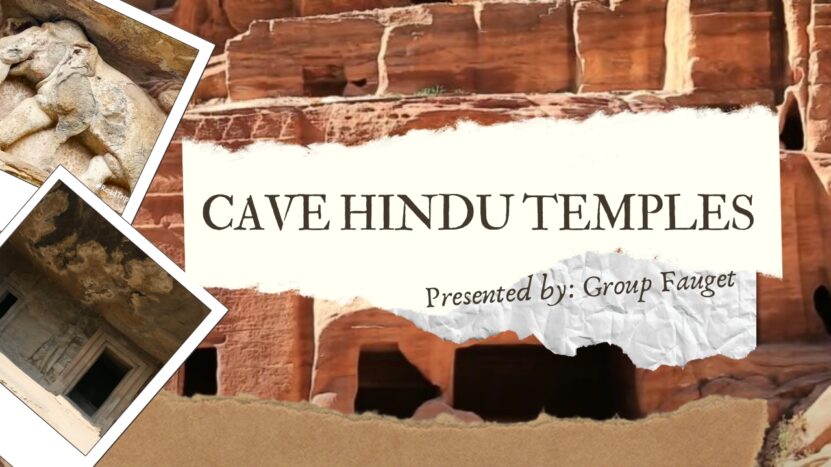India, a land of diverse cultures and rich history, has an enchanting array of cave Hindu temples that are sure to leave you spellbound. These ancient temples carved out of solid rock, showcase the zenith of architectural brilliance and artistic creativity. In this article, we’ll delve into ten mesmerizing cave Hindu temples across India that you must visit to witness their enigmatic beauty and spirituality.
1. Ajanta Caves, Maharashtra
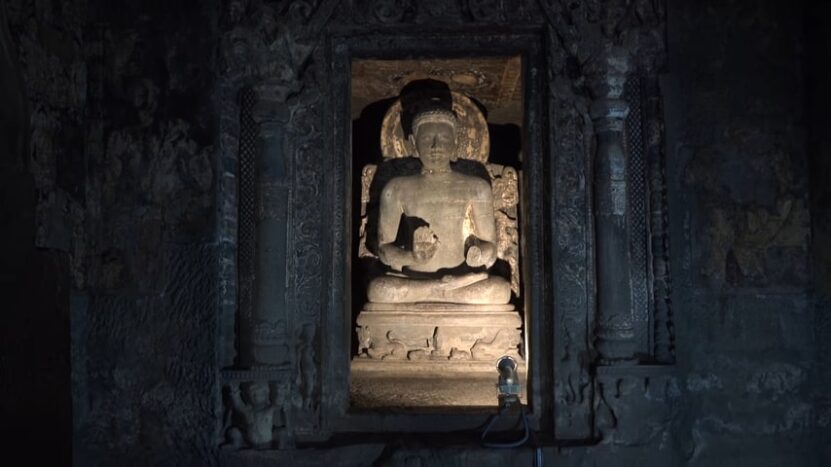
Located in the Aurangabad district of Maharashtra, the Ajanta Caves are a UNESCO World Heritage Site and one of the most famous cave temple complexes in India. Dating back to the 2nd century BCE, these 30 rock-cut Buddhist caves showcase some of the most exquisite frescoes, sculptures, and murals.
Though primarily a Buddhist site, some Hindu elements can also be found, particularly in caves 16 and 17. The artistic grandeur of Ajanta will leave you enthralled, and it is a must-visit destination for art and history enthusiasts.
2. Ellora Caves, Maharashtra
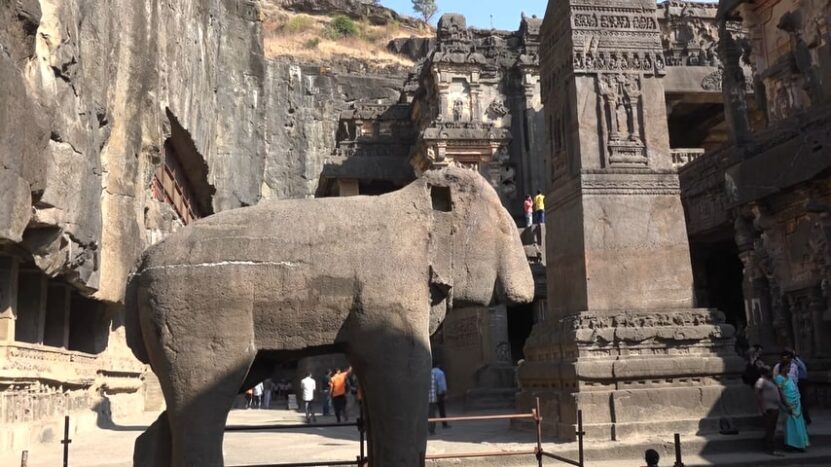
Just a few miles from the Ajanta Caves lies another UNESCO World Heritage Site, the Ellora Caves. Spread over 34 caves; this complex encompasses Hindu, Buddhist, and Jain temples carved between the 6th and 10th centuries.
The most iconic structure within Ellora is the Kailasa Temple (Cave 16), a monolithic masterpiece dedicated to Lord Shiva. This enormous temple was carved out of a single rock and boasted intricate carvings depicting various gods, goddesses, and mythical creatures. The awe-inspiring Kailasa Temple is not to be missed on your Indian cave temple journey.
3. Elephanta Caves, Maharashtra
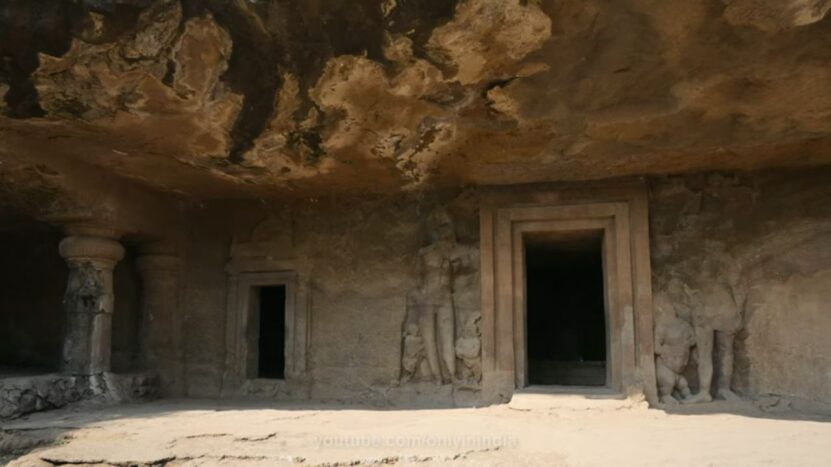
A short boat ride from Mumbai takes you to Elephanta Island, home to the magnificent Elephanta Caves. This UNESCO World Heritage Site houses both Hindu and Buddhist caves dating back to the 5th and 8th centuries.
The main cave, dedicated to Lord Shiva, features colossal sculptures, including the iconic Trimurti – the three-faced representation of Shiva as the creator, preserver, and destroyer. Exploring the Elephanta Caves will transport you to an era of spiritual and artistic excellence.
4. Badami Cave Temples, Karnataka
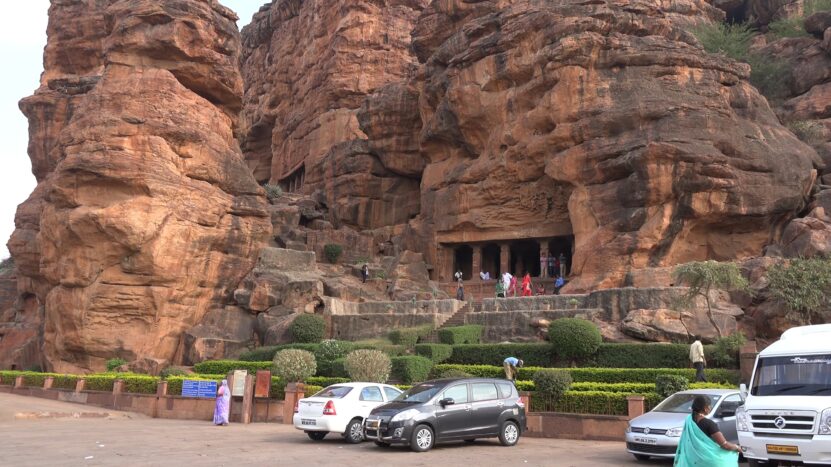
Nestled amidst sandstone cliffs in northern Karnataka, the Badami Cave Temples are a series of four exquisite rock-cut temples built by the Chalukya dynasty in the 6th and 7th centuries.
The cave temples feature intricate carvings and sculptures of various Hindu gods, such as Shiva, Vishnu, and their avatars. The fusion of North Indian Nagara and South Indian Dravidian architectural styles is a testament to the craftsmanship of the Chalukya artisans. A visit to Badami will not only immerse you in the splendor of ancient India but also offer a picturesque retreat with its serene lakes and rugged landscapes.
5. Udayagiri and Khandagiri Caves, Odisha
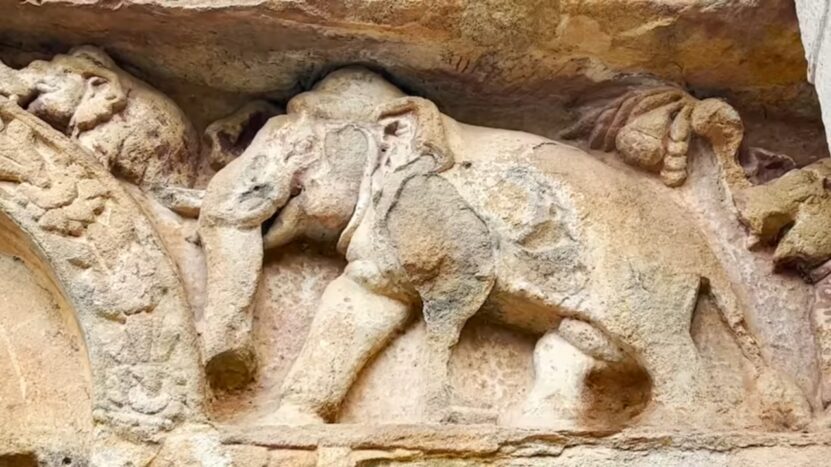
Located near Bhubaneswar, the capital city of Odisha, the twin hills of Udayagiri (Sunrise Hill) and Khandagiri (Broken Hill) house a series of 33 caves adorned with ornate carvings and sculptures.
These Jain and Hindu caves, built during the reign of the Kalinga dynasty, date back to the 2nd century BCE. Apart from their religious significance, the caves also offer panoramic views of the surrounding countryside, making it an ideal destination for both spiritual and nature enthusiasts.
6. Undavalli Caves, Andhra Pradesh
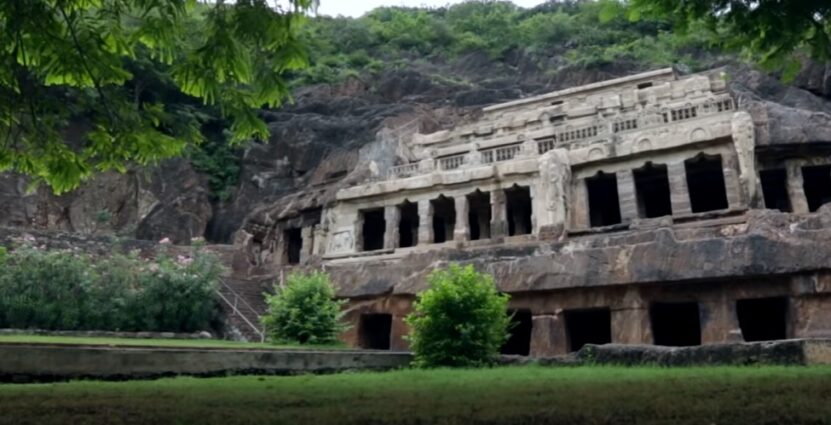
Situated in the Guntur district of Andhra Pradesh, the Undavalli Caves are a series of rock-cut temples dating back to the 4th and 5th centuries. Originally built as Jain caves, they were later converted into Hindu temples.
The star attraction of Undavalli is a massive four-storied cave temple dedicated to Lord Vishnu. This colossal structure houses a magnificent reclining statue of Vishnu, intricately carved from a single block of granite. The Undavalli Caves provide a fascinating insight into the architectural and religious evolution of ancient India.
7. Karla Caves, Maharashtra
Located near the bustling city of Pune, the Karla Caves are among the finest examples of ancient rock-cut architecture in India. These caves, built between the 2nd century BCE and 5th century CE, primarily served as Buddhist monasteries but also include Hindu and Jain elements.
The most striking feature of the Karla Caves is the Great Chaitya, a prayer hall adorned with beautiful sculptures and intricate carvings. The large arched entrance, wooden ribs on the ceiling, and the imposing stone pillar are just a few of the architectural marvels that await you at Karla Caves.
8. Pancha Rathas, Tamil Nadu
The Pancha Rathas, or Five Chariots, are a group of monolithic rock-cut temples located in the historical town of Mahabalipuram, Tamil Nadu. Built during the reign of the Pallava dynasty in the 7th century, these temples are dedicated to the Pandavas, the five brothers from the Indian epic Mahabharata, and their wife, Draupadi.
The Pancha Rathas showcase a unique blend of Dravidian and Nagara architectural styles and are adorned with intricate carvings and sculptures. The serene coastal backdrop of Mahabalipuram further enhances the charm of this must-visit destination.
9. Varaha Cave Temple, Tamil Nadu
;Another gem from Mahabalipuram, the Varaha Cave Temple, is a rock-cut temple dedicated to Lord Vishnu’s third incarnation, Varaha. Dating back to the 7th century, this temple features a beautifully carved panel depicting Vishnu as Varaha, lifting the Earth Goddess Bhudevi from the ocean.
The temple also showcases various other sculptures, including those of Goddesses Lakshmi and Durga. The Varaha Cave Temple, with its artistic elegance and mythical narratives, is sure to captivate your imagination.
10. Trichy Rock Fort Temple, Tamil Nadu
Perched atop a massive rock formation in the city of Tiruchirappalli, the Trichy Rock Fort Temple is a stunning example of ancient rock-cut architecture. The temple complex, built between the 6th and 8th centuries, houses two main temples – the Ucchi Pillayar Temple, dedicated to Lord Ganesha, and the Thayumanavar Temple, dedicated to Lord Shiva.
A climb up the rock’s steep steps rewards visitors with panoramic views of the city and the Kaveri River. The Trichy Rock Fort Temple is an excellent blend of architectural grandeur and natural beauty.
Final Words
India’s cave Hindu temples are a testament to the unparalleled craftsmanship and devotion of ancient artisans. These architectural marvels, steeped in spirituality and history, offer a fascinating journey into the country’s rich cultural heritage. Whether you’re an avid traveler, a history buff, or a spiritual seeker, these ten enchanting cave temples across India should definitely be on your bucket list.

